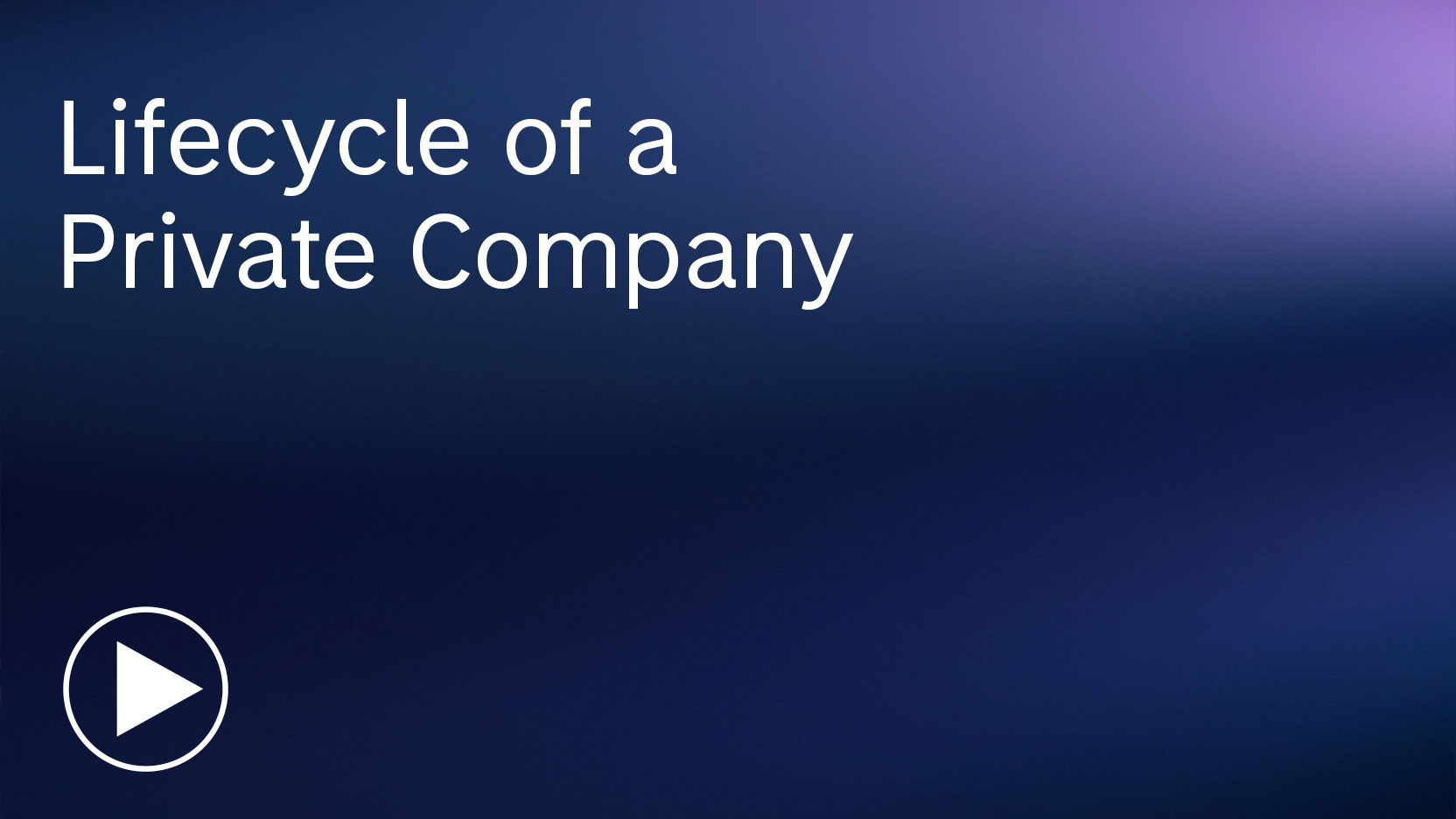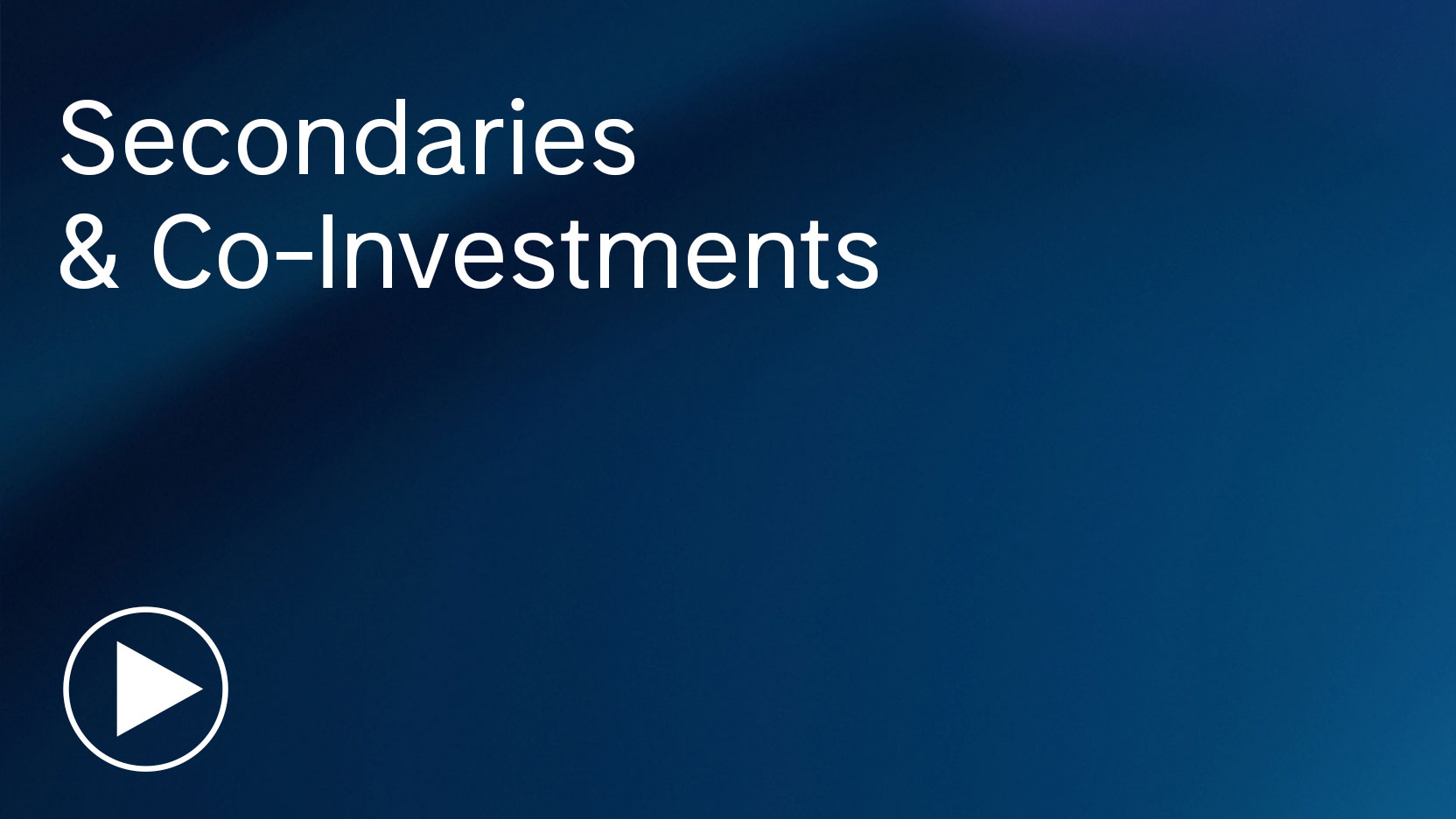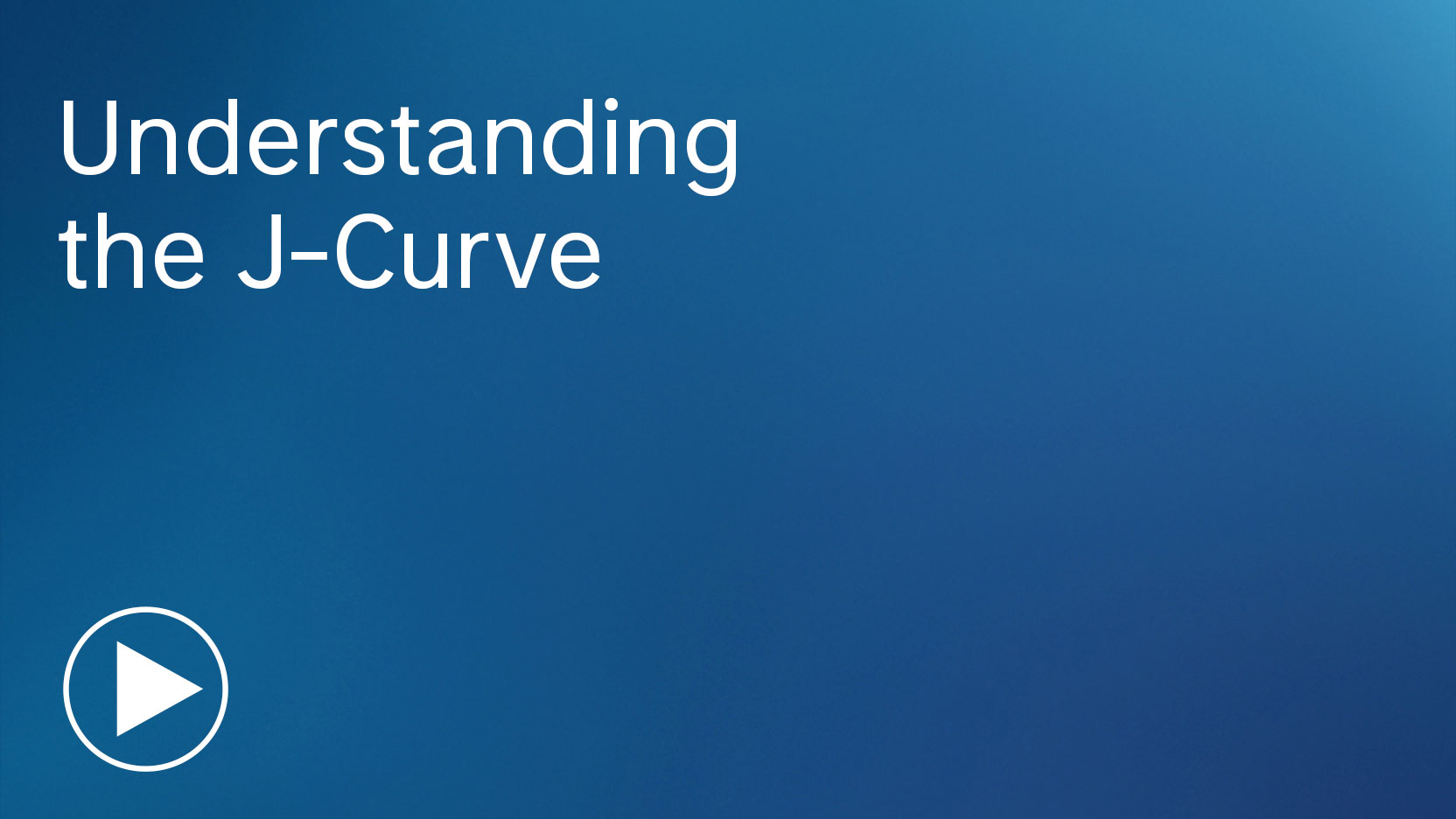
Transcript
The vast majority of private companies will never receive attention from angel investors, venture capital, or private equity investors. The vast majority of companies just stay with the entrepreneur or the entrepreneur’s family, or maybe they’ll be able to hire five or 10 people, but the company will never progress to the point of having a substantial equity valuation.
Typically, we’re not seeing any external investment in a company until it’s perceived that the value of that company exceeds $1 to $3 million, and the vast majority of the number of entrepreneurial ventures will never reach that valuation or attract external funding. Let’s look at the lifecycle of a private company.
Once a company progresses to have a firm valuation of a million dollars or more, they might be able to grow that valuation and attract external capital. As we look at the life cycle of a company, it starts off as extraordinarily risky, and failure rates are very high for young companies. As a rule companies become more valuable with every milestone they meet.
Each company starts off with an idea, that progresses to a prototype, that progresses to a patent. That patent progresses to revenues and customers, and then you receive revenue growth from more customers. Every time the entrepreneur meets a milestone, that company becomes more valuable and less risky.
The highest risk investments are made by the entrepreneur, their families, and friends, and they never get to the stage of earning an investment from an angel or venture capital funding. In the pre-seed stage, the company is in the idea stage. It has little to no revenue. It’s very hard to attract capital. And when they do attract capital, it’s going to be a relatively small investment, typically between $50,000 and $250,000, valuing the firm at between $1 and $3 million.
Venture capitalists will typically make small investments or staged investments. They’ll buy the company 5% or 10% at a time, while the private equity buyout managers will take a majority stake, buying between 51 and 100 percent of the company as a buyout manager. Venture capital investments are staged. As the company becomes more valuable, more successful, and less risky, the company will attract greater routes of funding.
The seed stage is typically the venture’s first time raising external capital.
They already have a product, a prototype, and a patent, and they’re serving a growing number of customers and generating revenue. The company is really worth something now. The firm valuation might be between $5 million and $15 million, and equity investments are coming in at the size of $500,000 to $2 million.
This is where the angels are involved. Angels are individual investors. They were often entrepreneurs themselves, and they’re investing in these companies, typically with valuations of $2.5 million and $8 million. Where things get really serious for an entrepreneur is the Series A funding round or the Series B funding round, when you’re attracting legitimate venture capital interest to your company. The company has already established the products, the revenue, and the customer base, and now the company is really worth something. Companies might be able to raise $5 million in the Series A round, valuing the firm at up to $15 million. After the Series A round goes well, you progress along to the Series B with funding of up to $10 million, valuing the company at up to $50 million.
The Series A and the Series B are when you really start to scale the company and attract significant interest from venture capital managers. Once the company becomes extraordinarily large and successful, they might progress along to Series C, Series D, Series E. And this is where the value of the company explodes, as these companies are lower risk. Once you get to the Series C and the D funding rounds, they’re likely to have a longer life and larger and growing revenues. This is where the larger investor base comes in. Series A and Series B are dominated by venture capital, and the seed stage is often friends, family, and angels.
Once the company progresses to Series C and Series D, interest becomes more broad. Investors could include private equity buyout firms. You could have aggressive growth mutual funds come in because they’re allowed to invest up to 15% of a daily mutual fund into private companies. Investors in the Series C, Series D, and even later rounds, the companies are valued at a hundred million dollars or more. Ideally, the company will get to the unicorn stage, where a privately held company is valued at more than $1 billion. As companies progress from a Series A to a Series B funding round, typically companies are worth more in the Series B than in the Series A. Each funding round attracts greater amounts of capital at greater firm valuations. Unfortunately, some companies undergrow the concept of a down round, where they raise money for the company at a later round of funding at a lower firm value than previously experienced.
Venture capital is extraordinarily risky. Historically 37% of the value invested in seed companies has been in companies that have failed. 24% of the value invested in Series A has failed. 17% of the value invested in Series B has failed. Every time there’s a later round of funding, every time the company is meeting these milestones, every time the company is achieving greater valuations, the failure rate is going down.
Even when we get to the Series C and D funding rounds, these companies that might be worth $50 million, $100 million, a billion dollars, there still are failure rates in the range of 8% to 15% of those companies.
The goal of a venture capital-backed firm is to get to the exit. An exit is when shares of the portfolio company are sold out of the venture capital fund into other investors’ portfolios. Most exits of smaller companies, the seed stage, the Series A, and the Series B, are strategic mergers or financial mergers. If the company’s worth only $20 million or $50 million, it doesn’t make sense for that company to go public through an IPO. They’re sold in strategic or financial mergers. Ideally, it would be a strategic merger, which is the acquisition of a portfolio company by a larger company in the same industry, desiring to expand its operations.
It’s a software company buying a software company, a cleantech company buying a cleantech company. These are strategic mergers. Now, financial mergers might be less desirable because you’re selling to another investor who’s in it for the financial returns, and you’re not going to get the synergies of the increased value of that company when added to the other company.
If one software company’s buying another software company, they both become more valuable through that acquisition, but you’re not getting those synergies in a financial merger because you’re simply selling the company to another venture capital fund or you’re selling to a conglomerate that doesn’t have those operating synergies.
The IPO market is for companies with much larger market capitalizations, those who’ve gone through the Series C or Series D funding rounds, that value the firm at more than $100. Exits of venture capital-backed companies are highly cyclical, and they peak at the time of the hot IPO markets.
In many years, venture capital funds will exit 1,000 or 1,500 companies, but the vast majority of those will be through the strategic merger or financial merger route. The number of companies that are acquired varies by the size of the company, by the stage of the company, the age, and the value of the company.
Approximately one-quarter of early-stage companies are acquired, and between 12% and 20% of later-stage companies are acquired. The later-stage companies are more likely to go public, and the earlier-stage companies are more likely to stay private. About a quarter of the companies are acquired in any given year, so we’re constantly investing in new companies.
Every year, there are new investments being made by venture capital funds, and every year, there are companies that are being sold out of the venture capital funds into the merger or the IPO market. IPO activity is highly cyclical. When the market has strong returns, the number of IPOs tends to be larger.
In a bear market, typically IPO activity can slow substantially, such as the trough of IPO activity in 2008 and 2009. In 2023, IPOs raised a total of $23 billion for an average of $145 million per company. It makes the most sense to go public when the firm’s valuation exceeds $500 million or even a billion dollars.
There’s a bare minimum of $100 million dollars of market cap to justify a public company listing. IPOs typically don’t sell all of the shares of the company, as only 20% of the shares of the company might be sold in an IPO. If the average IPO raised $145 million in proceeds, and they only sold 20% of the company in that IPO, the company was valued at $725 million, but they only chose to sell $145 million of the company. Sometimes, the company is selling the shares; sometimes, it’s the founders; and other times, it’s the employees or the venture capitalists. It’s typically the company shares that are being sold in the IPO, while the founders, the employees, and the venture capitalists are typically subject to a lockup period, where they are not able to sell their shares until three to six months after the IPO. That’s when the company has a relatively mature valuation, and maybe the volatility has slowed down a bit. It’s important to understand the lifecycle of a private company when you’re investing, especially in venture capital-backed companies.
In this video, we review the lifecycle of a private company and how it evolves from high-risk startup to potential IPO or acquisition. Most private companies never reach a valuation that attracts outside capital, but those that do typically follow a path from pre-seed and seed funding through Series A, B, C, and beyond—gaining value and reducing risk with each milestone.







